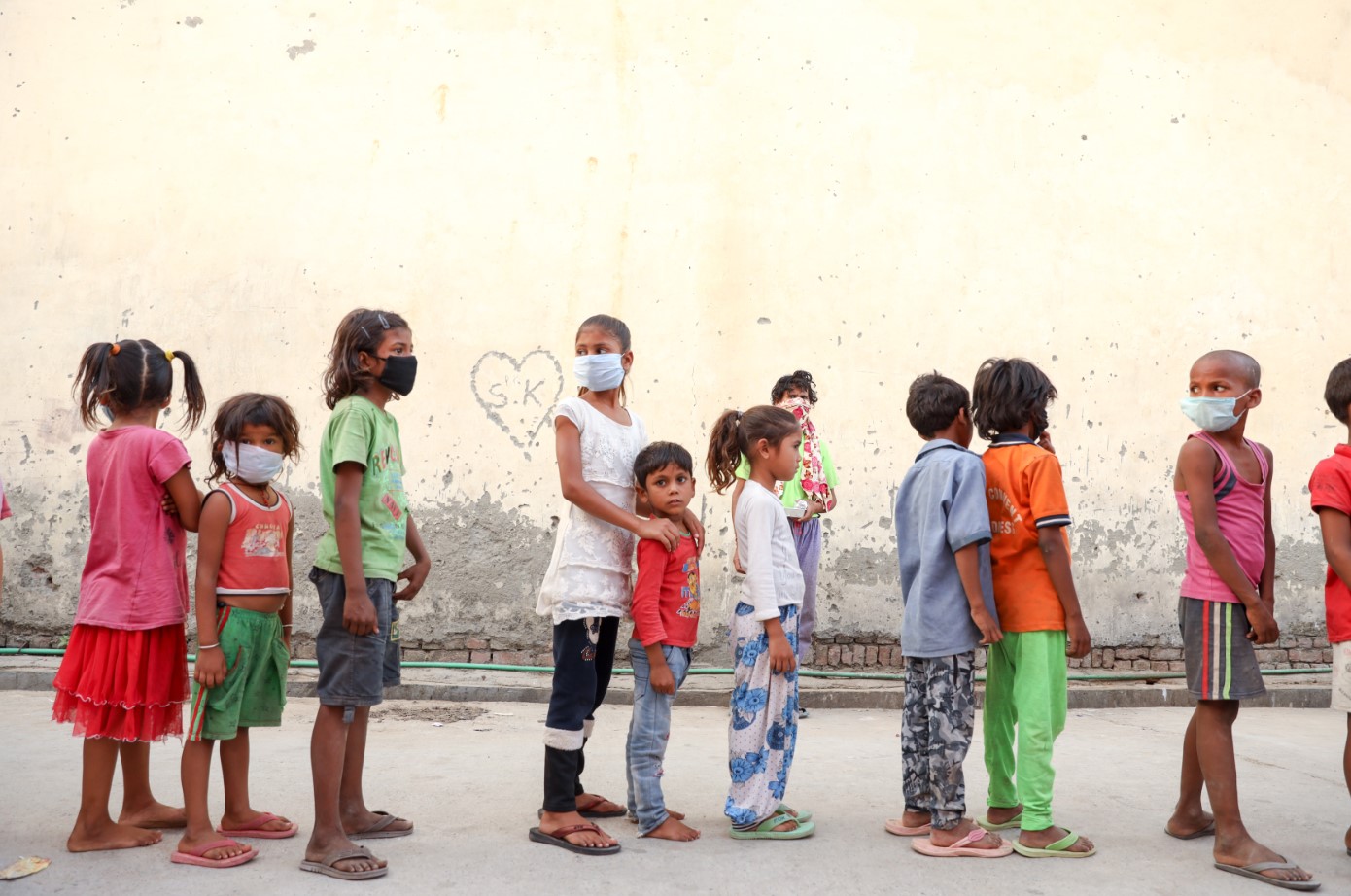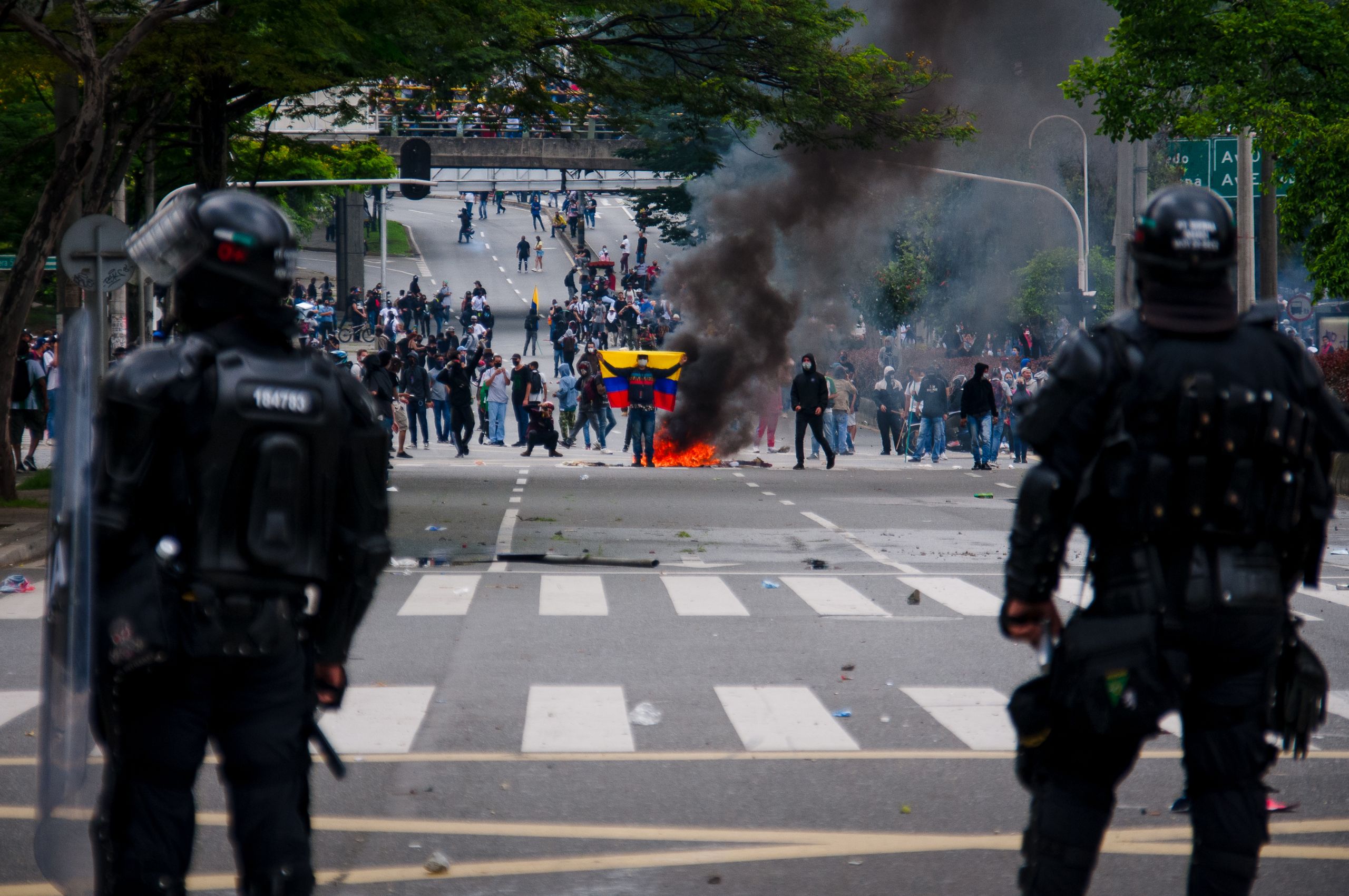
△ Delhi, India, May 2020. Children from slums in India await a charity food distribution.
Disasters accelerate inequality. The adverse conditions facing the vulnerable are exacerbated by disasters, making it harder to overcome those conditions. This is the case for the COVID-19 pandemic. The pandemic had a significant impact worldwide, but its damage is more lethal to the poor.
According to the 2020 UNDP report, the world is experiencing a decline in education, health, and living standards for the first time since 1990. All these declines began with the global epidemic of COVID-19 and are widely observed in all world regions. The economic contraction caused by the quarantine measures severely hit the lives of vulnerable groups such as residents of underdeveloped countries, low-income groups, women, and the disabled.
UN Secretary-General Antonius Guterchs criticized the reality of global inequality exacerbated by COVID-19:
"COVID-19 has been likened to an x-ray, revealing fractures in the fragile skeleton of the societies we have built.
It is exposing fallacies and falsehoods everywhere.
The lie that free markets can deliver healthcare for all; The fiction that unpaid care work is not work; The delusion that we live in a post-racist world; The myth that we are all in the same boat.
While we are all floating on the same sea, it’s clear that some are in superyachts, while others are clinging to the drifting debris."
ㅡ
The face of global inequality revealed by Covid 19
ㅡ
As the pandemic is prolonged, inequality in global income and assets is intensifying. The government's fiscal rescue packages support the wealthy industries, while the livelihood of the vulnerable, who have lost their job due to the blockade, is worsening.
In February 2021, Oxfam, an international aid organization, pointed out in a report called The Inequality Virus that “the world is witnessing the largest increase in inequality in history due to COVID-19”.
○ COVID-19 is an inequality virus: The rich and middle class were able to choose various responses to overcome the epidemic, but many of the poor and the vulnerable had to face a harsh reality with no options. According to The Inequality Virus Report, the top 1,000 billionaires, dubbed ‘Mega-Rich,’ took only nine months to recover their wealth to their pre-pandemic highs. In contrast, the world's poorest people will take more than ten years to recover.
○ Growing Poverty from COVID-19: Due to COVID-19, about 90 million people in low-income countries around the world are at risk of falling into poverty (International Monetary Fund report). If the inequality caused by the pandemic continues to the current level, it is predicted that the world's poor population will increase by about 500 million by 2030 (World Bank WB report).
○ Polarization Accelerated by Digitization and Automation: The COVID-19 contributes to the growing inequality, as the digital transformation of production and operations is accelerating. Increased automation and telecommuting further threaten the labor market of low-skilled, underpaid workers. The problem is, as the ‘new normal’ of the COVID-19 era, such as working from home, is settled, jobs for low-skilled workers are expected to decrease significantly even after the pandemic.
ㅡ
Inequality leads to anger
Anger leads to social anxiety
ㅡ
“
This is not just a protest against an increase in subway fares,
it is an expression of years of repression,
primarily targeting the poorest people.
”

△ Bogota, Colombia, May 2021: The protests that began in opposition to the Colombian government's tax reform proposal have continued despite President Iván Duque's decision to withdraw the reform bill.
From the spark of anger and discontent formed over poverty and inequality on May 10, 2021, protests continue to spread in Columbia. The start of the protest was the government's tax reform plan. The government proposed a tax reform plan to increase the tax burden from those with a monthly salary of about $650 per month, only three times the minimum wage, which created a backlash from the middle and low-income class.
Protesters were angered that the government was only targeting the middle and low-income citizens rather than the wealthy. The protest was also the repressed anger over poverty and inequality that COVID-19 has deepened.
In 2019, massive protests took place in Ecuador, Chile, Lebanon, and Spain as well. The causes, methods, and goals are all different, but the common thing that drives people into the streets is inequality; many protesters have long been isolated from the state's wealth.
Protests in Ecuador began when the government announced it would abolish fuel subsidies, and in Chile, higher bus and subway fares sparked protests. Chile is one of the wealthiest countries in Latin America, but it is also the most unequal. Chile has the lowest income equality among the 36 member states of the Organization for Economic Co-operation and Development (OECD).
On the day when protesters and security forces clashed in Chile, Chilean President Sebastián Piñera was spotted eating in a high-end Italian restaurant, which angered the civilian.
A student at the protest told the media that "This is not just a protest against an increase in subway fares, it is an expression of years of repression, primarily targeting the poorest people."
The situation in Chile, which has spread to anti-government protests, is an important event that shows the growing gap between the rich and the poor and economic inequality. Not only in Chile, but around the world, the gap between the rich and the poor has become a spark that arouses social unrest.
ㅡ
Only the wealth of the rich continues to grow.
ㅡ
Oxfam International, which aids over 100 countries worldwide, publishes an inequality report every year at the Davos World Economic Forum, which brings together the world's wealthiest and most influential people.
In a January 2020 report, Oxfam diagnosed global inequality as 'out of control' due to the biased economic system that excludes women while billionaires accumulate more wealth. Click the link below to download the Oxfam Inequality Report.
The Oxfam report released in 2020 accused the government of exacerbating inequality by not securing sufficient resources for public services such as healthcare and education, imposing low taxes on businesses and the wealthy, and failing to prevent tax evasion adequately.
○ The wealth of the top 1% billionaires, twice the wealth of 6.9 billion people: The world's richest 1% has more than twice the wealth of the 6.9 billion people.
○ The top 1% of billionaires’ consistently accruing wealth: In 1980, the wealthiest 1% of the global village accounted for 16% of global income, and the bottom 50% accounted for 8%. In 2016, the top 1% accounted for 22% of global income, and the bottom 50% accounted for 10%. If the wealth trend accelerates, the top 1%'s income share is expected to increase by nearly 39% by 2050.
○ Half of the world's population lives on less than 5 dollars and 50 cents per day: 3.4 billion people, half of the world's population, live on less than 5 dollars and 50 cents per day.
○ The mortality rate before age 5 in the poorest countries, three times the mortality rate before age 5 in rich countries: The mortality rate of children before the age of 5 in the world's poorest countries (bottom 20%) is three times the mortality rate for children before age 5 in the world's wealthiest countries (top 5%).
○ Women's income is 1/2 of men's income: Up to 30% of the global income inequality index comes from inequality between women and men. Women are earning less than 50% of the median income than men (ranking all households in a country in order of income and then making exactly the middle household as median income).
○ Women's unpaid housework hours are twice as much as men's: Worldwide, women spend twice as much time on unpaid domestic work than men. The economic value of women's unpaid domestic work is $1.08 trillion per year. This is a major contributor to women's precarious jobs and low-income levels.
ㅡ
Why does inequality arise?
ㅡ
Poverty can result from an individual's lack of competence, but it is also the result of social, political, and structural inequality, such as inadequate welfare systems, corruption, and unequal trade structures. Therefore, a holistic approach from a political and social context and a global perspective must be made to solve global inequality.
○ Unstable Politics: War destroys all infrastructure in the country, causes a shortage of labor, and slows investment and business activities if it persists. In addition, when the government cannot fulfill its role due to political conflict, the country faces financial difficulties from reduced domestic and foreign investment and various economic activities.
In countries with high levels of corruption and crime, finances are not properly spent on public infrastructure, education, medical care, pensions, and social security, resulting in corruption. Corruption leads ○ to Corruption and Lack of Welfare: a deterioration in the quality of life of the people, loss of the driving force for economic development, and eventually leads to poverty.
○ Poor economic structure: The economic structure of rich countries is based on industries that can generate high profits. For example, developed countries in the United States and Europe are based on the IT industry or the patented pharmaceutical industry. On the other hand, poorer countries depend on the agricultural economy, making it difficult to generate high profits compared to its investment.
○ Low level of education: When countries with low levels of education are immersed in primary industries, advanced countries equipped with labor and skills through high-level education stand out in capital-intensive fields, and the economic gap between these two groups is widened. Without universal and systematic education, technological development and creative economic activities cannot be induced.
ㅡ
The key to resolving inequality is
fairness and inclusion
ㅡ


